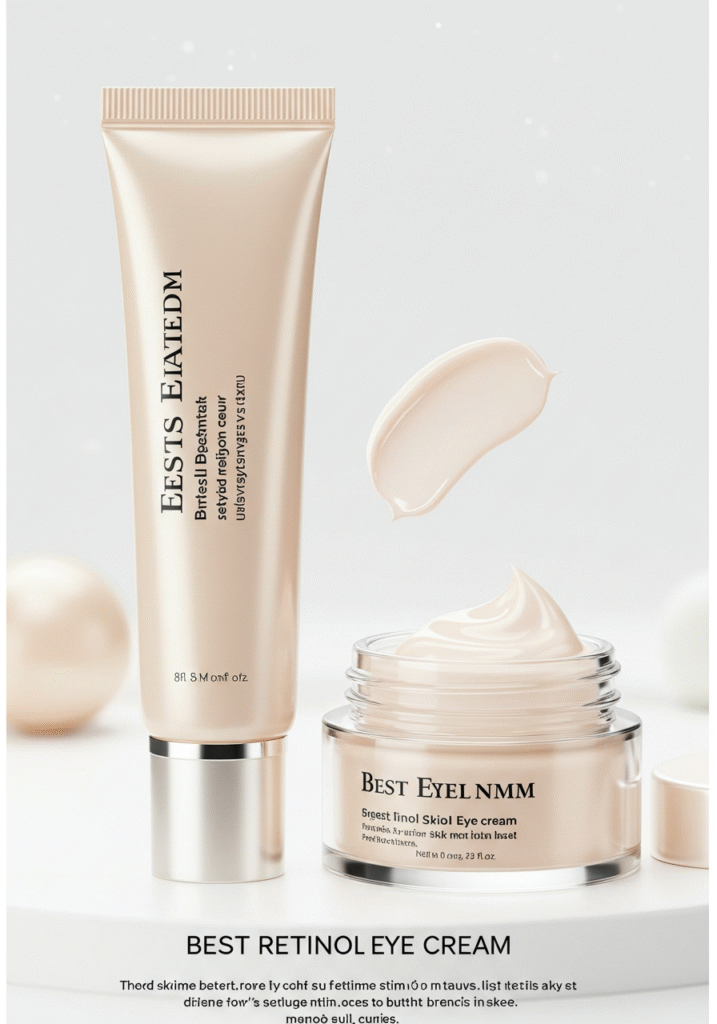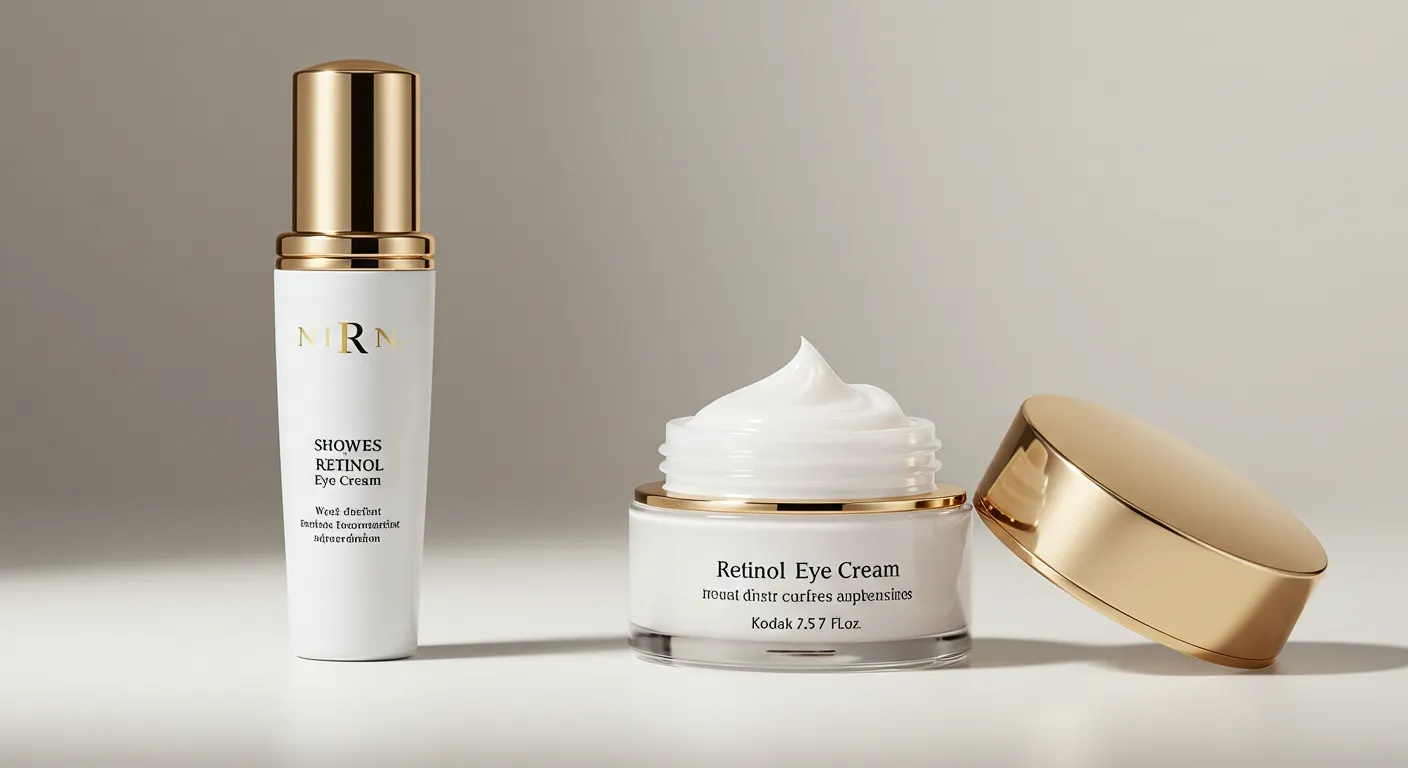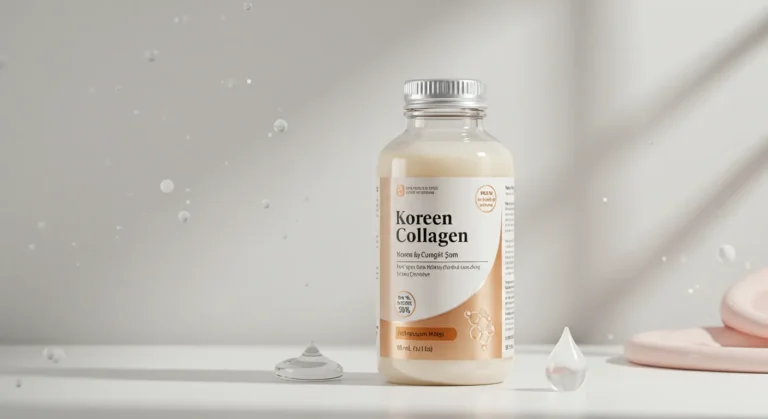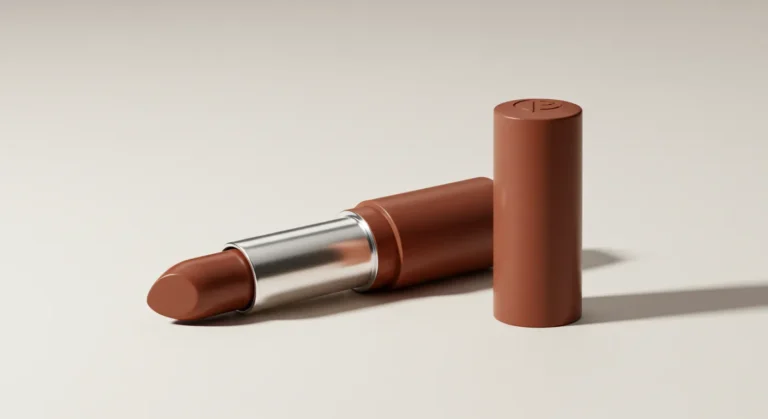Best Retinol Eye Cream Erase Wrinkles, and Dark Circles
Introduction
The delicate best retinol eye cream skin around your eyes is often the first place to show signs of aging from fine lines and crow’s feet to puffiness and dark circles. While there are hundreds of creams claiming miracle results, one ingredient stands out as a dermatologist-approved powerhouse: Best Retinol. That’s why finding the best eye cream can completely transform your skincare routine.
So, what makes so effective, and why is it crucial to choose the right formulation specifically designed for the eye area?
Best Retinol, a derivative of vitamin A, is celebrated for its anti-aging benefits, including its ability to increase cell turnover, smooth wrinkles, and boost collagen production. However, the skin under the eyes is thinner, more sensitive, and more prone to irritation. That’s why you need eye creams that balance strength with soothing ingredients like hyaluronic acid, peptides, or ceramides.
Over the past decade,Best Retinol-based Best Eye Cream Erase Wrinkles, and Dark Circles have evolved dramatically. Today’s top formulations are gentle enough for daily use, yet potent enough to reduce even stubborn signs of aging. Whether you’re in your late 20s hoping to prevent fine lines, or in your 40s and 50s aiming to reverse the signs of aging, there’s a eye cream for you.
But navigating the ever-expanding skincare market can feel overwhelming. With thousands of products to choose from, how do you find the best retinol eye cream for your skin type, age, and goals?
That’s exactly what this article is here to help with.
Throughout the following sections, we’ll break down:
- The science behind Best Retinol and how it targets the eye area
- Key ingredients to look for alongside Best Retinol for optimal results
- How to use Best Retinol eye cream without irritation
- Top dermatologist-approved product recommendations
- User testimonials and real-world results
- How to layer retinol with your current skincare routine
- Common mistakes to avoid when using retinol around the eyes
- Natural alternatives and how they compare to synthetic formulations
You’ll also learn about budget-friendly options, luxury treatments, and how to identify fake marketing claims from brands that overpromise and underdeliver.
The bottom line? Best Retinol eye cream isn’t just another trendy product — it’s a scientifically backed solution for maintaining youthful, radiant eyes.
So, whether you’re dealing with under-eye bags, laugh lines, or just tired-looking skin, keep reading. By the end of this guide, you’ll be fully equipped to choose the best retinol eye cream that fits your needs and delivers visible results — without the guesswork.
Why Retinol Eye Cream Is a Skincare Essential
In the world of skincare, one ingredient has stood the test of time when it comes to fighting signs of aging—Best Retinol. While this powerful derivative of vitamin A has been a staple in anti-aging serums and creams for decades, its integration into eye creams has elevated its popularity. The eye area is one of the first places to show signs of fatigue, stress, and aging, including dark circles, puffiness, fine lines, and wrinkles. That’s where the best retinol eye cream steps in—targeting these concerns with precision and effectiveness.
Retinol is revered for its ability to stimulate collagen production, accelerate cell turnover, and reduce the appearance of fine lines. However, the skin around the eyes is thinner and more sensitive than other parts of the face, which makes a Best Retinol formulation specifically designed for this area not just helpful, but absolutely essential. Unlike traditional moisturizers, the best retinol eye creams are engineered to deliver these benefits in a gentle, non-irritating way.
What makes Best Retinol eye cream truly essential is its multifaceted approach. For starters, it boosts skin elasticity by encouraging the growth of new cells and collagen. This directly counters sagging and diminishes the appearance of crow’s feet. Secondly, it helps fade hyperpigmentation, making dark circles appear lighter over time. And for those dealing with under-eye puffiness, many of these creams are formulated with added ingredients like caffeine or peptides to further reduce swelling and improve microcirculation.
But not all Best Retinol products are created equal. The best formulations include buffering agents or encapsulated retinol, which help minimize irritation and allow for a slower release into the skin. They’re also enriched with hydrating elements like hyaluronic acid, ceramides, and vitamin E, creating a balanced blend that moisturizes while fighting wrinkles.
In conclusion, if you’re looking to maintain a youthful appearance or begin preventative care, using the best retinol eye cream is no longer optional—it’s a core step in any modern skincare regimen. Whether you’re in your late 20s hoping to delay the first signs of aging or in your 40s seeking to reduce already visible fine lines, this targeted treatment can make a transformative difference when used consistently.

How to Choose the Best Retinol Eye Cream
Finding the best retinol eye cream isn’t as simple as picking the one with the most luxurious packaging or highest price tag. Your choice must align with your skin type, concerns, and sensitivity levels to deliver optimal results without irritation. With so many products on the market, here’s how to confidently select the perfect formula tailored for your unique skincare needs.
1. Understand Your Skin Type:
The first step is identifying whether you have dry, oily, combination, sensitive, or mature skin. For instance, individuals with dry or mature skin should seek a Best Retinol eye cream that includes deeply hydrating ingredients like squalane, peptides, or hyaluronic acid. These components help cushion the potency of Best Retinol while nourishing the skin. If your skin is oily or acne-prone, a lighter, gel-based formulation that includes ingredients like niacinamide or green tea extract may help keep the area balanced and refreshed.
2. Look for Encapsulated or Slow-Release Retinol:
Because the eye area is delicate, choosing a product that uses encapsulated retinol or time-release technology is critical. These advanced delivery systems release the Best Retinol gradually, minimizing irritation while still delivering anti-aging benefits. If you have sensitive skin, start with a product that contains low-dose Best Retinol (around 0.1% or less) and build up usage over time.
3. Consider Additional Active Ingredients:
The best retinol eye creams are enhanced with synergistic ingredients to boost their effectiveness. Caffeine reduces puffiness, vitamin C brightens dark circles, and ceramides help strengthen the skin barrier. These supportive ingredients amplify the benefits of Best Retinol while addressing multiple concerns at once.
4. Prioritize Fragrance-Free & Hypoallergenic Formulas:
Fragrance is a leading cause of irritation, especially in products designed for sensitive areas. Look for labels that read “fragrance-free,” “hypoallergenic,” or “dermatologist-tested” to ensure you’re not exposing your skin to unnecessary irritants.
5. Packaging Matters:
Retinol degrades when exposed to light and air, which can compromise its effectiveness. Choose products that come in opaque, air-tight tubes or pumps, ensuring the stability of the formula from the first use to the last.
Choosing the best retinol eye cream is about more than chasing trends—it’s about understanding your skin’s needs and selecting a well-rounded formula that offers long-term, visible results. The right eye cream should not only treat but also protect, nourishing the eye area with each application.
Key Ingredients
While retinol is the star ingredient in many of the top-performing eye creams, the supporting cast is equally crucial. The most effective formulations combine Best Retinol with nourishing, soothing, and protective components that help mitigate irritation and deliver comprehensive care to the delicate eye area. Here’s a breakdown of the key ingredients you should look for when choosing the best retinol eye cream:
1. Hyaluronic Acid
This powerhouse humectant draws moisture into the skin, plumping fine lines and keeping the under-eye area hydrated. Since Best Retinol can be drying, hyaluronic acid acts as the perfect counterbalance, maintaining the skin’s moisture barrier.
2. Peptides
Peptides are short chains of amino acids that signal the skin to produce more collagen and elastin. When paired with Best Retinol, peptides amplify anti-aging effects and help firm and tighten the delicate skin under the eyes.
3. Niacinamide (Vitamin B3)
Known for its brightening and anti-inflammatory properties, niacinamide works wonderfully in conjunction with retinol. It helps reduce the appearance of dark circles, supports the skin barrier, and calms any redness or irritation.
4. Ceramides
These lipid molecules occur naturally in the skin and play a key role in maintaining its protective barrier. When added to Best Retinol formulations, ceramides strengthen the skin, prevent moisture loss, and reduce sensitivity.
5. Caffeine
An energizing addition, caffeine helps constrict blood vessels, reducing puffiness and swelling. It also contributes to a more awake, refreshed appearance—perfect for morning application.
6. Vitamin E
A well-known antioxidant, vitamin E complements Best Retinol by neutralizing free radicals and preventing oxidative stress. It also soothes and nourishes the skin, which is especially beneficial for those with sensitive eyes.
7. Licorice Root Extract
This natural brightener can help fade dark circles over time. When combined with Best Retinol, it offers a powerful solution for under-eye pigmentation without causing irritation.
When scanning ingredient lists, remember that balance is key. The best retinol eye creams aren’t just about having the most ingredients but about having the right ingredients in the right concentrations. A product that combines retinol with these skin-supportive elements ensures maximum efficacy and minimal discomfort, especially for first-time users.
How to Apply Retinol Eye Cream
Knowing the correct way to apply retinol eye cream can make a significant difference in how effective it is and how your skin tolerates it. While retinol is powerful, it can also be irritating if misused, especially around the delicate eye area. Here’s a complete guide to applying Best Retinol eye cream safely and effectively.
Start With Clean Skin
Always begin by cleansing your face using a gentle, hydrating cleanser that doesn’t strip the skin. Avoid products with alcohol, salicylic acid, or benzoyl peroxide right before applying Best Retinol to prevent excessive dryness. Pat your skin dry gently with a soft towel—never rub, as this area is fragile.
Apply a Hydrating Toner or Essence
If your routine includes a hydrating toner or essence, now is the time to apply it. Avoid harsh exfoliating toners when using retinol, especially if you’re new to it.
Use a Grain-of-Rice Size Amount
Retinol is potent, so less is more. Use a very small amount—about the size of a grain of rice—for each eye. Dot it gently along the orbital bone using your ring finger, which applies the least pressure. Don’t apply the cream too close to the lower lash line or eyelids unless the formula specifically allows it.
Apply Only at Night
Retinol can make your skin more sensitive to sunlight, so it’s best to apply it only during your nighttime skincare routine. This ensures better absorption and minimizes the risk of UV-induced irritation.
Layer With Moisturizer
To minimize dryness and irritation, layer a hydrating eye cream or moisturizer over the retinol. This can act as a buffer, especially if you’re a beginner. Look for ingredients like hyaluronic acid, peptides, or ceramides that strengthen the skin barrier.
Start Slow and Monitor Your Skin
If you’re new to retinol, begin by applying the cream 2–3 times a week. Gradually increase frequency as your skin builds tolerance. Watch for signs of irritation like redness, peeling, or stinging. If these occur, reduce the frequency or switch to a lower concentration.
Don’t Mix With Certain Ingredients
Avoid layering retinol eye cream with products containing Vitamin C, AHAs, BHAs, or exfoliating scrubs in the same routine. These combinations can lead to over-exfoliation and sensitivity. Save those products for alternate days.
Always Use Sunscreen
Because retinol increases your skin’s sensitivity to UV rays, it’s crucial to use a broad-spectrum sunscreen of at least SPF 30 the next day—even if you don’t go outside much. This helps prevent sunburn and protects the delicate eye area.
Applying retinol eye cream with care ensures maximum results with minimal side effects. By following these steps and listening to your skin’s feedback, you’ll enjoy smoother, firmer, and more youthful-looking eyes over time.
Comparing Retinol Eye Cream With Others
The skincare industry offers a wide range of products for combating signs of aging around the eyes. Retinol is just one of many options—but how does it stack up against other popular treatments? Let’s compare.
Retinol Eye Cream vs. Peptide Eye Creams
Peptides are chains of amino acids that help build essential proteins in the skin like collagen and elastin. While retinol speeds up cell turnover and boosts collagen production over time, peptides work by signaling the skin to repair itself. If you’re seeking fast hydration with minimal irritation, peptides may be a gentler option. However, for visible improvements in fine lines and texture, retinol is usually more powerful over the long term.
Retinol Eye Cream vs. Hyaluronic Acid Eye Creams
Hyaluronic acid (HA) is a moisture magnet. It’s excellent for plumping the skin and reducing the appearance of fine lines caused by dehydration. However, HA doesn’t treat wrinkles at a structural level like retinol. Ideally, HA and retinol should be used together—retinol corrects, and HA hydrates.
Retinol Eye Cream vs. Caffeine-Based Eye Creams
Caffeine eye creams are popular for reducing puffiness and dark circles due to their vasoconstrictive properties. They’re best used for immediate results after a sleepless night or to look more awake. However, they don’t provide the collagen-boosting benefits of retinol. For comprehensive anti-aging, retinol wins in the long run.
Retinol Eye Cream vs. Vitamin C Eye Creams
Vitamin C is a powerful antioxidant that brightens the skin and protects it from environmental damage. It’s especially helpful for fading dark spots and under-eye discoloration. However, it’s not as effective for reducing crow’s feet or deep-set wrinkles. Again, combining both (on alternating nights) may provide the best overall results.
Retinol Eye Cream vs. Eye Serums
Eye serums are lighter than creams and often have concentrated active ingredients. While retinol can be found in both formats, creams tend to provide more hydration and are better suited for overnight use. Serums might absorb faster but can sometimes lack the moisturizing benefits that creams provide.
In summary, while other ingredients like peptides, HA, caffeine, and Vitamin C offer targeted benefits, retinol remains the gold standard for long-term wrinkle reduction. It’s the go-to for anyone serious about reversing aging signs around the eyes.
Common Mistakes
Even the best retinol eye cream won’t deliver results if used incorrectly. Many users give up on retinol due to irritation or a lack of visible improvement—often because of avoidable mistakes. Let’s look at the most common errors.
Using Too Much Product
One of the biggest mistakes is overusing retinol. More product does not mean better results—it increases the chance of irritation, dryness, and peeling. Stick to the recommended amount (a grain of rice per eye).
Applying It Too Close to the Lash Line
Applying retinol directly on the eyelids or right up to the lash line can cause stinging or irritation. The product naturally spreads slightly as it warms on your skin, so it’s best to apply only around the orbital bone.
Skipping Moisturizer
Retinol is drying, especially in the initial weeks. Skipping a moisturizer can lead to flakiness and discomfort. Always follow with a hydrating cream to buffer the effects.
Not Doing a Patch Test
Retinol can trigger reactions in sensitive skin. Always do a patch test before applying it to your entire eye area. This reduces the risk of a full-blown reaction and helps you understand how your skin will respond.
Mixing With Incompatible Ingredients
Using retinol alongside AHAs, BHAs, or Vitamin C in the same routine can overwhelm your skin barrier. Alternate these ingredients across your routines or days to reduce the risk of irritation.
Applying During the Day
Retinol breaks down in sunlight, reducing its efficacy and increasing sensitivity. Daytime application not only wastes the product but also risks UV damage. Always apply it at night and pair it with sunscreen during the day.
Not Being Patient
Retinol is not a quick fix. It can take 4–12 weeks of consistent use to see visible results. Some people give up too soon, assuming it isn’t working. Be patient, and don’t expect overnight miracles.
Skipping Sunscreen
Using retinol without sunscreen the next morning can lead to increased sun sensitivity, redness, and pigmentation. Sunscreen is non-negotiable if you’re using retinol in your skincare routine.
Avoiding these mistakes can significantly improve your experience with retinol eye cream and maximize your long-term results. Education and consistency are key to reaping the full anti-aging benefits.
Real User Experiences
Let’s look at what real users say about their experience with retinol eye creams, and how dermatologists guide its usage.
Real User Testimonials
- Maria, 42: “I started using retinol eye cream six months ago, and the crow’s feet around my eyes have noticeably softened. I had some dryness in the first two weeks, but it was manageable with moisturizer. Now I won’t go a night without it.”
- James, 37: “As a guy who’s always had dark circles and fine lines, retinol eye cream has been a game-changer. I use one with added peptides and hyaluronic acid, and my under-eyes look much brighter and smoother.”
- Nadia, 50: “I’ve tried many anti-aging creams, but only retinol made a real difference. My dermatologist recommended it, and though it took a few weeks, I’m impressed with how firm my under-eye area looks now.”
Dermatologist Insights
Most dermatologists agree that retinol remains the gold standard in anti-aging skincare. Here’s what they typically recommend:
- Start Slowly: Apply retinol eye cream two to three times a week at first to allow your skin to adjust.
- Watch for Signs of Irritation: Redness, flaking, or stinging mean it’s time to reduce usage or switch to a milder formula.
- Combine With Moisturizer: Use a rich eye cream or barrier-repairing moisturizer alongside retinol to minimize dryness and support skin healing.
- Avoid Harsh Products on the Same Day: If you use exfoliants, acids, or peels, do so on alternate days to avoid over-exfoliation.
- Stick With It: Retinol takes time. You may not see changes for several weeks, but the improvements will be long-lasting and worth the wait.
By combining real-world experiences with professional advice, it’s clear that retinol eye creams deliver visible, science-backed results when used with care. For anyone committed to long-term skin health, it’s a wise investment.
FAQs
What does a retinol eye cream do?
A retinol eye cream helps reduce the appearance of fine lines, wrinkles, and crow’s feet by stimulating collagen production and increasing skin cell turnover. It also improves texture, reduces dark circles, and can enhance firmness in the under-eye area.
Can I use a regular retinol cream around my eyes?
It’s not recommended. The skin around the eyes is thinner and more sensitive than the rest of the face. Retinol eye creams are specifically formulated with lower concentrations of retinol and soothing ingredients to minimize irritation.
How often should I apply retinol eye cream?
Start with 2–3 times per week at night, then gradually increase to daily use as your skin builds tolerance. Always apply a moisturizer afterward and use sunscreen in the morning to protect against sun sensitivity caused by retinol.
What age should I start using retinol eye cream?
You can start using a gentle retinol eye cream in your mid-to-late 20s as a preventive measure. For anti-aging purposes, people in their 30s, 40s, and beyond can benefit from stronger formulations to target existing signs of aging.
Are there any side effects of using retinol eye cream?
Some users may experience dryness, flakiness, or mild redness when starting retinol. These effects typically subside with continued use. To reduce sensitivity, apply only a pea-sized amount and avoid using it alongside other harsh actives like AHAs or benzoyl peroxide.
Can I use retinol eye cream in the morning?
Retinol is best used at night, as it can increase your skin’s sensitivity to sunlight. If used in the morning, always follow with a broad-spectrum SPF 30 or higher to prevent UV damage.
What ingredients should I look for with retinol in eye creams?
Look for hydrating and calming ingredients like hyaluronic acid, ceramides, niacinamide, peptides, or vitamin E. These help to minimize irritation and boost the overall effectiveness of the retinol.
Conclusion
Choosing the best retinol eye cream is more than just a beauty decision—it’s an investment in long-term skin health. The delicate skin around your eyes is often the first to show signs of aging, fatigue, and environmental damage. That’s why a targeted solution like retinol eye cream becomes essential in a smart skincare routine. But not all retinol eye creams are created equal, and knowing how to identify the right formula for your unique skin needs can make all the difference in results.
Throughout this guide, we’ve examined the science behind retinol—how it works, what it does, and why dermatologists continue to recommend it as the gold standard in anti-aging ingredients. By promoting collagen production, improving cellular turnover, and minimizing fine lines and wrinkles, retinol can dramatically enhance the texture and appearance of the under-eye area. However, because this area is more sensitive than other parts of the face, using the right concentration and complementary ingredients (like hyaluronic acid, niacinamide, or peptides) is crucial to avoid irritation.
When selecting the best retinol eye cream, focus on factors such as your age, skin sensitivity, hydration needs, and personal skincare goals. For example, those in their early 20s may seek lightweight, preventative formulas with lower retinol percentages, while mature users may opt for richer creams with more potent retinoids and added firming agents. Other considerations—like fragrance-free formulas, cruelty-free status, and dermatologist testing—can help narrow down your choices further.
It’s also important to integrate retinol eye creams properly into your skincare regimen. Start by applying the cream at night, 2–3 times a week, then gradually increase usage as your skin builds tolerance. Always follow with a moisturizer to lock in hydration and use SPF in the daytime to protect your renewed skin from sun damage, which can be intensified with retinol use.
For those battling puffiness, dark circles, crow’s feet, or crepey texture under the eyes, the consistent and mindful use of a high-quality retinol eye cream can lead to visible improvements. In some cases, these changes become evident within 4–6 weeks, with optimal results showing after 8–12 weeks of continued use.
Today’s market offers a range of impressive retinol eye creams, from high-end luxury products to budget-friendly drugstore gems. Brands like RoC, Neutrogena, SkinCeuticals, Olay, and CeraVe each bring unique offerings, catering to various skin types and concerns. Remember: the “best” retinol eye cream is one that aligns with your personal needs, feels comfortable on your skin, and delivers the results you’re looking for—without unnecessary side effects.
In a world saturated with beauty products and ever-evolving skincare trends, retinol remains a reliable ally. With the right knowledge and a bit of patience, this powerful ingredient can refresh, renew, and restore the delicate skin around your eyes—revealing a brighter, smoother, and more youthful gaze.







